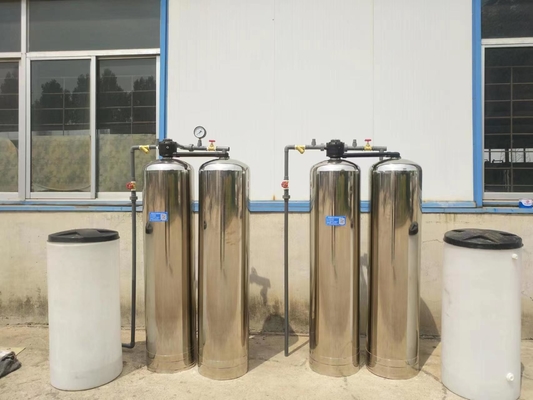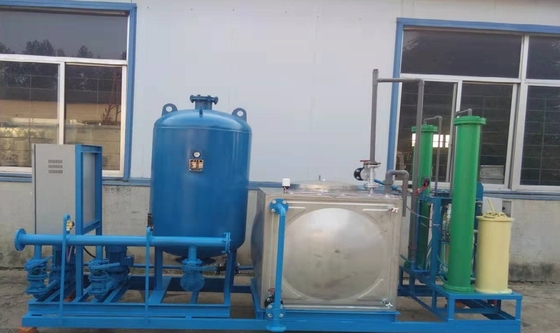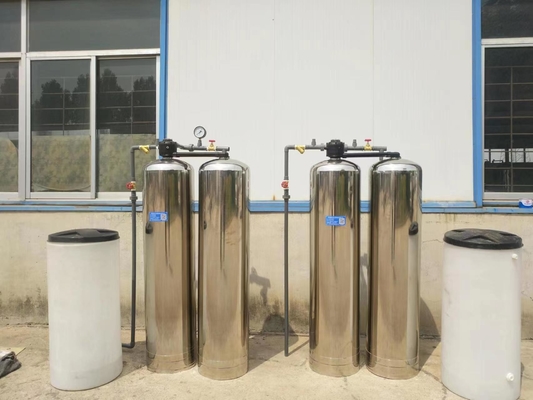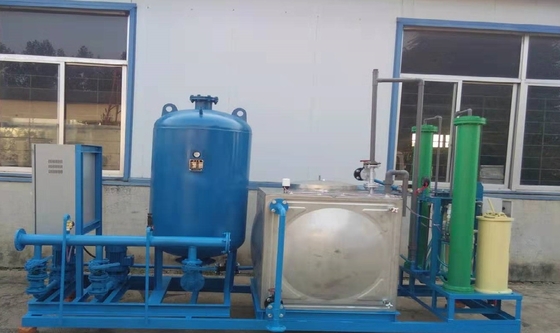-
Condensate Water Recovery Device
-
Reverse Osmosis Equipment
-
Fully Automatic Water Softener
-
Industrial Sand Filter
-
Water Supply Equipment
-
Chemical Dosing Device
-
Container Flipper
-
Container Loading and Unloading Machine
-
Truck Flipper
-
Electric Transfer Cart
-
Electronic Weighbridge
-
Mobile Loading Dock Ramp
-
Air Compressor Heat Recovery
-
Water Treatment Accessories
Capacity Water Softening Equipment Double Tank Water Softener Stainless Steel / FRP

Contact me for free samples and coupons.
Whatsapp:0086 18588475571
Wechat: 0086 18588475571
Skype: sales10@aixton.com
If you have any concern, we provide 24-hour online help.
x| Origin | Taian, Shandong | Product Information | Automatic Water Softening Equipment - Dual-Tank, Single-Tank, Continuous Water Production |
|---|---|---|---|
| Materials | Fiberglass Reinforced Plastic (FRP), Stainless Steel, Carbon Steel | Product Specifications | 1-100T/H |
| Brand | Tonglida | Application Fields | Industrial Boilers, Central Air Conditioning Systems, Heat Exchangers, Hotels, Restaurants, Food And Chemical Industries, Laundry And Dyeing, Medical And Sanitation, Etc. |
| Highlight | double tank water softener stainless steel,frp water softening equipment,frp double tank water softener |
||
Product Description:
The fully automatic water softener is equipped with a comprehensive automatic control system and can be customized as a single-tank or dual-tank system according to user requirements. The entire system operates automatically, with one tank in use while the other serves as a backup.
When the operating tank reaches the set water production capacity, it automatically goes into regeneration mode, and the backup tank takes over the operation. The entire softening system operates in a fully automatic mode, and the operation of the softening tank includes several process stages: running, backwashing, brine suction, ion exchange, forward flushing, and standby.
The raw water flows through the resin tank containing ion exchange resin, which is equipped with an automatic control valve. The exchangeable ions Na+ in the resin undergo ion exchange with the cations (Ca2+, Mg2+) in the water, resulting in the water hardness of the softener outlet being ≤0.03mmol/L.
When the system reaches the set flow rate, the controller automatically initiates the regeneration process. The main steps involved are as follows:
- Backwashing: Water is directed upward through the bottom distributor to flush and loosen the resin bed, simultaneously removing accumulated suspended particles from the resin surface.
- Brine Suction Regeneration: Saturated brine solution is injected into the resin tank through the brine injector after dilution to a concentration of 5-8%. The brine solution flows downward through the deactivated resin bed, regenerating the resin and restoring its original exchange capacity.
- Exchange: The exchange process consists of two steps. In the first step, after the regeneration liquid is injected, there is still some regeneration brine in the upper space of the resin tank that has not participated in the regeneration process. To fully utilize this brine, clean water with the same flow rate as the regeneration liquid is used to thoroughly regenerate the uninvolved brine through the resin bed. This step is called exchange. In the second step, the regeneration waste liquid in the resin pores is displaced from the resin bed.
- Forward Flushing: The purpose of forward flushing is to completely remove the residual regeneration waste liquid from the resin bed and clean it until the water meets the required standards.
| Project Name | Unit | 20T/H | 25T/H | 30T/H | 35T/H | 40T/H | 50T/H | 60T/H | 80T/H | 100T/H | |
| Inlet pressure | mpa | ||||||||||
| Water production | T/H | 18-22 | 23-27 | 27-33 | 32-38 | 35-45 | 45-55 | 55-65 | 70-90 | 90-110 | |
| Raw water turbidity | O | ||||||||||
| Raw water hardness | mmol/L | ||||||||||
| Residual hardness of soft water | mmol/L | ||||||||||
| Self-consumption water rate | % | ||||||||||
| Power supply | Single-phase electricity 50HZ 220V | ||||||||||
| Diameter of exchange column | Stainless steel head | mm | ∅650 | ∅650 | ∅750 | ∅750 | ∅900 | ∅900 | ∅1000 | ∅1200 | ∅1400 |
| Ordinary head | mm | ∅640 | ∅640 | ∅760 | ∅760 | ∅890 | ∅900 | ∅1000 | ∅1180 | ∅1400 | |
| Resin tank height | mm | ||||||||||
| Inlet and outlet water pipeline | Solenoid valve | mm | DN65 | DN65 | DN65 | DN65 | DN80 | DN80 | DN100 | DN125 | DN150 |
| Valve body | mm | ||||||||||
| Flow meter | L/H | 400 | 400 | 600 | 600 | 1000 | 1000 | 2000 | 2000 | 2500 | |
| Resin filling capacity | Solenoid valve | KG | |||||||||
| Total weight of equipment | KG | ||||||||||
| Salt tank size | Self-processing | mm | 640*750 | 640*750 | 640*750 | 640*750 | 700*850 | 760*800 | 760*800 | 890*800 | |
| Purchase from outside | 800L | 800L | 1000L | 1000L | 1500 | 2000 | |||||
Features:
High Automation Level: Our system is designed to provide a high level of automation, allowing for seamless and efficient water management without requiring constant monitoring and adjustment.
Stable Water Quality: We understand the importance of consistent and reliable water quality and have implemented technologies to ensure that our system can maintain optimal conditions at all times.
High Efficiency: Our system is designed to operate with high efficiency, providing reliable and effective water management while minimizing waste and reducing overall energy consumption.
Low Energy Consumption: Our system is designed to operate with minimal energy requirements, making it an environmentally sustainable option for water management that reduces energy costs and promotes green practices.
Low Operating Costs: Our extensive automation and energy-efficient design ensure that our system operates with minimal operating costs, making it a highly cost-effective solution for sustainable water management.
Technical Parameters:
1. Simplified and Reliable Automatic Control
The system comes with automatic control and operation that's simple and reliable. This removes the need for manual intervention, eliminating errors and reducing chances of equipment failure. The simple operation makes it easy to achieve the desired results without any hassle.
2. Strong Adaptability to Hard Water
The water softener has strong adaptability and can soften water with high hardness levels up to ≤15mmol/L. In a single pass, it can achieve residual hardness levels of ≤0.03mmol/L, making it ideal for a wide range of applications.
3. Short Regeneration Time, Low Resin, and Salt Consumption
The system has a short regeneration time, requiring low resin and salt consumption. This effectively reduces operating costs while maintaining stable water quality.
4. Lightweight, Compact, and Rational Design
The equipment is designed to be lightweight, compact, and rational, requiring minimal space. This makes it ideal for use in almost any setting, while taking up less space and costing less money.
5. Easy Installation and Setup
The complete machine is delivered from the factory, and it's easy to install with only minimal connections required. The inlet and outlet pipes and power supply need to be connected to start water production. This simple installation saves time and reduces costs.
Applications:
The automatic water softener is a versatile device used to treat circulating makeup water in a variety of industrial and domestic applications. This includes its use in steam boilers, hot water boilers, heat exchangers, steam condensers, air conditioning systems, and direct-fired equipment and systems. The technology is capable of producing softened water with reduced hardness, thanks to single-stage or multi-stage treatment processes.
The device is also widely used in various industrial sectors, including food, electroplating, pharmaceuticals, chemicals, printing and dyeing, textiles, and electronics. Moreover, it is commonly employed as a pre-treatment method in desalination systems to enhance their efficiency and lifespan.
Overall, the automatic water softener is an essential tool for treating water in a range of applications. Its ability to reduce water hardness and scale buildup makes it ideal for both industrial and domestic use. Whether you are looking to improve the lifespan of your equipment or simply improve the taste and quality of your drinking water, the automatic water softener is a reliable and effective solution.






